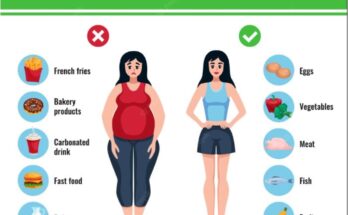A second health care worker who cared for a person hospitalized in Missouri with H5N1 bird flu developed mild respiratory symptoms but was not diagnosed with the flu, Centers for Disease Control and Prevention reported on Friday.
The CDC said Missouri health officials didn’t learn the health care worker had symptoms until the person recovered, too late to conduct a diagnostic test.
“CDC is in close communication with the state of Missouri in its ongoing investigation into a positive case of H5N1 there, including regarding the identification of close symptoms,” a spokeswoman for the agency told STAT in a letter. – email. “The finding does not change the CDC’s assessment that the risk to the public remains low.”
This makes the second possible case related to the confirmed case appear well after the fact. Last week it was revealed that the family of the confirmed case spoke to the health worker who had taken care of the person while he was in hospital who was also ill. That first aid worker tested positive for the flu.
In the case of family contact, a person got sick on the same day as the confirmed case, which is the only thing that prevents the possibility of the virus spreading between these two people. Instead, it suggests that if the second person was also infected with H5N1, they had the same virus infection as the confirmed case.
It is still unknown how the person contracted H5N1. While several US states have seen the virus spread among cattle, Missouri has not reported any infected dairy cows, or any poultry outbreaks linked to the virus.
A Missouri man was hospitalized on Aug. 22, although the case was reported publicly on Sept. 6, after the person has been released from the hospital and recovered.
STAT attempted to contact the Missouri Department of Health and Senior Services several times last week to inquire about the status of its investigation into the case. Late Friday, after the first version of this article was published, the agency issued a response.
“The investigation is ongoing and health care workers who may have had contact with the case have been identified and are continuing to be followed up,” department spokeswoman Lisa Cox said in an email.
Missouri is still investigating. The CDC can send its disease investigators if invited by the state, and Missouri has not yet issued an invitation.
The CDC announced a new public health worker in the flu spotlight posted on its website on Friday.
The update revealed that Missouri collected blood samples from the confirmed case and family contact. Those samples will be used for what is known as a serological test – looking for antibodies that can confirm past infection with H5N1 bird flu. Samples are sent to the CDC for testing.
The CDC said the newly identified health worker will be asked to provide a blood sample for testing. Asked if health officials had agreed to provide blood samples for antibody testing, Cox said: “We should know more next week.”
Michael Osterholm, director of the University of Minnesota’s Center for Infectious Disease Research and Policy, said there may be another explanation for the health worker’s illness. During the time the confirmed case was in the hospital, there were many respiratory infections, including high levels of Covid-19 activity.
“We’ll have to see what the serology shows,” Osterholm said.
The news came as California announced it had found seven more infected dairy herds, bringing the number of affected farms in the state to 17, and increasing the number of infected herds in the state to 215 in the states. 14. Cattle outbreaks were first confirmed in late March.
Determining the prevalence of the virus in dairy herds is a challenge because many farmers have refused to test their animals, seeing nothing useful for their jobs to be tied to this outbreak. However, others took and stored samples of sick cattle before the outbreak and sent them for testing soon after a government program that pays farmers for lost production the milk starts working. At least seven herds have been sealed to the rear in this way.
Fourteen human cases have been identified so far this year, four involving farm workers who work with cattle, nine in people who worked to hunt infected chickens, and a case of Missouri. There have been many reports of symptomatic workers who have not been tested, and it is widely believed that the 14 confirmed cases represent only part of the picture of human exposure.
In order to try to solve this problem, the CDC and the Ohio Department of Health conduct serological testing of veterinarians and other veterinary professionals, taking advantage of the gathering of these professionals at the annual meeting of the American Association of Bovine Practitioners Columbus, Ohio.
Blood samples and questionnaires were collected from approximately 150 veterinarians and others from 45 states who work with cattle. The aim is to see if there has been an undetected infection among these people.
This article was updated with input from the CDC and the Missouri Department of Health and Senior Services
#health #care #worker #tied #Missouri #bird #flu #case #respiratory #symptoms



